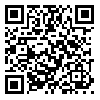Volume 8, Issue 4 (20 2011)
sjsph 2011, 8(4): 41-49 |
Back to browse issues page
Download citation:
BibTeX | RIS | EndNote | Medlars | ProCite | Reference Manager | RefWorks
Send citation to:



BibTeX | RIS | EndNote | Medlars | ProCite | Reference Manager | RefWorks
Send citation to:
Behfar M, Ehsani M, Salamati P, Holakouie Naieni K, Jamshidi R, Derakhshandeh-Peykar P. Associations of red blood corpuscle mean volume and hematocrit with severity of beta-globin gene mutations in beta-thalassemia carriers. sjsph 2011; 8 (4) :41-49
URL: http://sjsph.tums.ac.ir/article-1-68-en.html
URL: http://sjsph.tums.ac.ir/article-1-68-en.html
Abstract: (7875 Views)
Background and Aim: Thalassemia, a heterogeneous disease, is one of the most common single-gene diseases worldwide. The aim of this study was to find associations between hematological indices and severity of beta-globin gene mutations in beta-thalassemia carriers.
Materials and Methods: In this cross-sectional study, 30 beta-goblin gene mutations (b+ and b○) in 1206 unrelated beta-thalassemia carriers were investigated. In addition, their hematological indices, including CBC and electrophoresis results, were determined. The association between genetic findings and hematological parameters (mean corpuscular volume (MCV) and mean hematocrit corpuscular hematocrit (MCH)) were determined using the SPSS software, the statistical test being the t-test.
Results: The results indicated that b+-thalassemia carriers had higher MCV and MCH means than b○-thalassemia carriers. These findings would certainly have practical implications in public health.
Conclusion: The results show a significant correlation between two hematological indices and certain types of mutations in beta-thalassemia carriers.
Materials and Methods: In this cross-sectional study, 30 beta-goblin gene mutations (b+ and b○) in 1206 unrelated beta-thalassemia carriers were investigated. In addition, their hematological indices, including CBC and electrophoresis results, were determined. The association between genetic findings and hematological parameters (mean corpuscular volume (MCV) and mean hematocrit corpuscular hematocrit (MCH)) were determined using the SPSS software, the statistical test being the t-test.
Results: The results indicated that b+-thalassemia carriers had higher MCV and MCH means than b○-thalassemia carriers. These findings would certainly have practical implications in public health.
Conclusion: The results show a significant correlation between two hematological indices and certain types of mutations in beta-thalassemia carriers.
Type of Study: Research |
Subject:
General
Received: 2010/07/3 | Accepted: 2010/11/16 | Published: 2013/08/9
Received: 2010/07/3 | Accepted: 2010/11/16 | Published: 2013/08/9
| Rights and permissions | |
 |
This work is licensed under a Creative Commons Attribution-NonCommercial 4.0 International License. |





